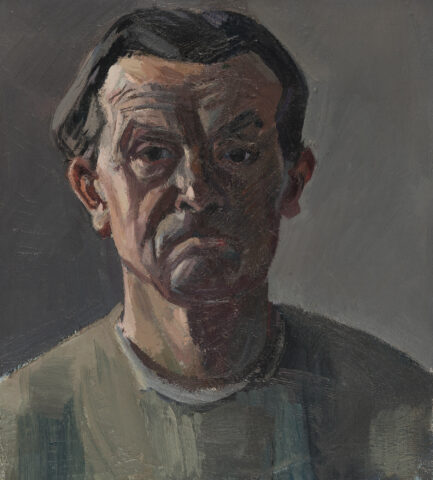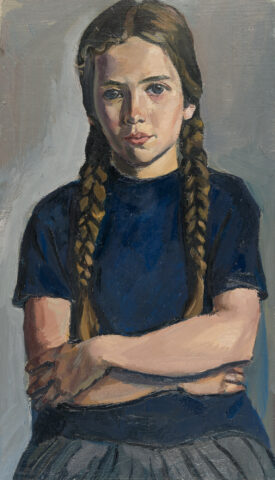Curt Querner
Curt Querner became a locksmith’s apprentice at the age of fourteen and subsequently worked as a factory locksmith. It was not until 1926 that he enrolled at the Academy of Fine Arts in Dresden to study art with Richard Müller and Otto Dix. In 1930 he left the academy and joined the ASSO, the Association of Revolutionary Visual Artists in Germany. As he could not live from his painting, Querner ran a trade in rope goods in the Erzgebirge. The resulting close contact with small farmers in the Erzgebirge was reflected in numerous portraits of farmers and workers. In 1931 the Galerie Junge Kunst in Dresden held a first exhibition of Querner’s work, followed in 1933 by a watercolour exhibition at the Kühl art dealer’s in Dresden. From then on until 1943 Querner exhibited regularly at Kühl’s every two years. In autumn 1933 Querner was arrested together with other visitors to the exhibition “Degenerate Art” in the Dresden Town Hall in front of the war triptych by Otto Dix and taken into police custody for three days. Economically unsuccessful, Querner lived on unemployment benefits until 1937; he was only able to sell one painting and a few watercolours. In 1940 he was called up for military service, and from 1943 until the end of the war he was stationed in Norway. It was not until 1947 that he returned from French military imprisonment and from then on lived in his parents’ house in Börnichen, as his Dresden flat, including his studio, had been completely destroyed in 1945. Only about a third of his works could be saved by his wife Regina. In the following years Querner worked as a drawing teacher. Gradually, his artistic work was made accessible to the public in numerous solo and group exhibitions and his work was recognised by important awards, including the Käthe Kollwitz Prize of the Academy of Arts of the GDR in Berlin (1971) and the National Prize of the GDR (1972).



